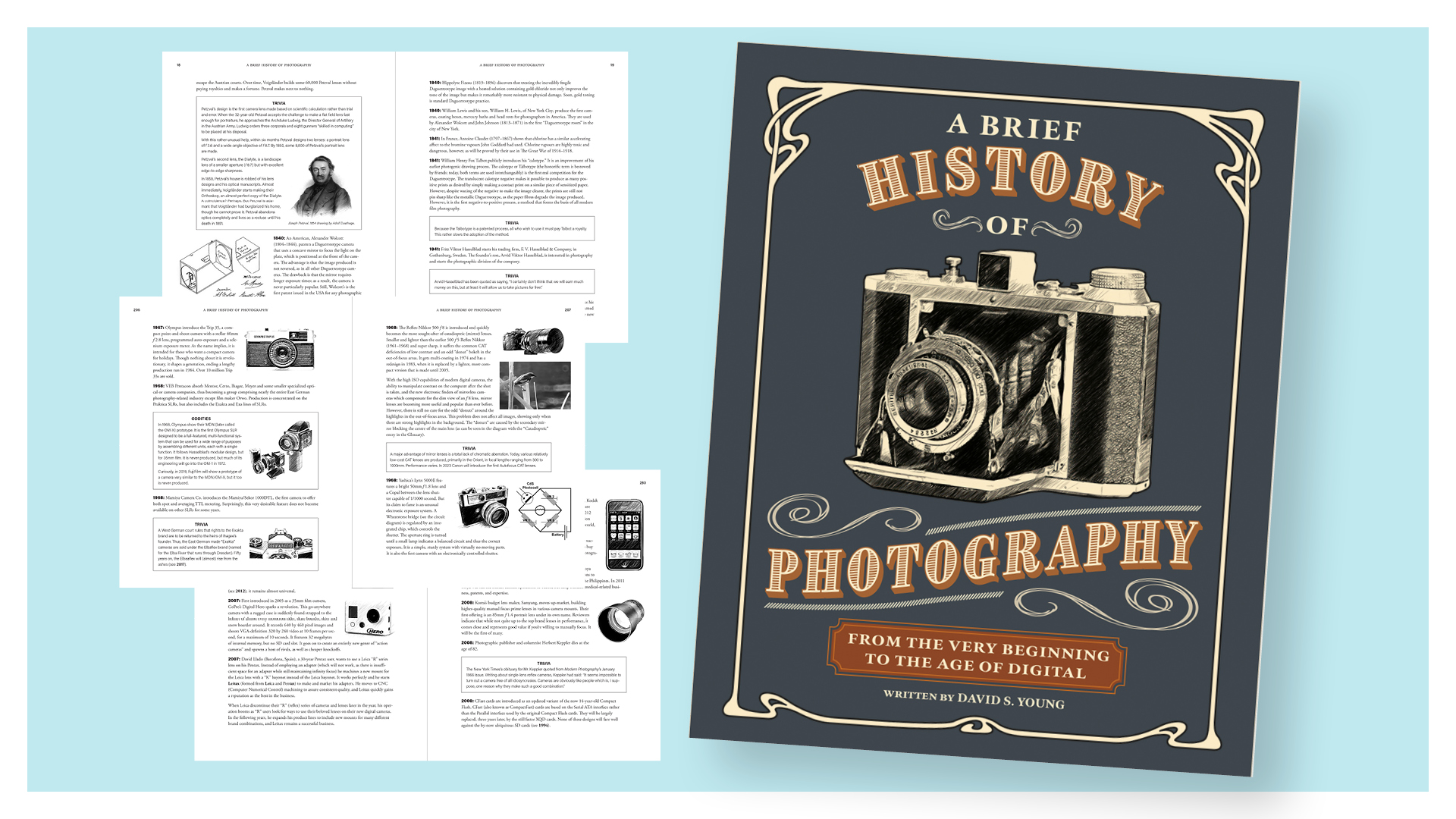
Ever wondered who was the first woman to take a photograph? When the single-lens reflex camera was invented, or the year of the first aerial photograph?
Is the year when Edward Weston and Ansel Adams co-founded Group f64 on the tip of your tongue, or the name of the brand which introduced the first camera with automatic exposure?
Perhaps you'll need to phone a friend to confirm when Ilford launched its XP1 chromogenic film, or which brand was first to market with in-body image stabilization – and when?
Keep reading to see the answers to these questions – they all derive from facts that appear in A Brief History of Photography by David S Young.
On sale now from all good bookstores and online retailers, the book has seven chapters, ranging from 'The Early Years' to '2000 to Now' (the final entry is from 2020).
Running to 370 pages, so there's plenty to dip in and out of, the book majors on facts but manages to be entertaining at the same time – thanks to a sprinkling of regular boxes covering 'Trivia', 'Oddities' and 'Auction Mania'.
These do exactly what you'd expect – amusing tidbits, the context to major technical developments (and why some didn't make it past first base) and the incredible prices fetched by rarities and prototypes when they came up for sale. And if anything isn't clear, a comprehensive glossary at the back of the book demystifies technical terms, acronyms and more.
So whether you're a photographer or are close to someone who is, or know someone in your family or group of friends who enjoys taking pictures, A Brief History of Photography could be the perfect treat or ideal personalized gift.
Many other books chronicle the history of the medium, for sure, but some of them are pretty dry.
For a lighthearted dip into the key moments, the movers and shakers behind them – and a sense of what might have been for some of the more out-there developments – this tome will make a great buy.
So here's a brief history of A Brief History of Photography from its author, David S Young…
How did the book come about, and how long were you working on it?
The book began as an appendix to another book, which was never written. Back in 2004 I thought that book should have a brief (three- or four-page) appendix on the history of photography, working on the theory that you can't know where you're going unless you know where you've been.
I showed my draft to some friends and they loved it. From there the original book was forgotten, while the appendix took on a life of its own and the research consumed the next 16 years of my life.
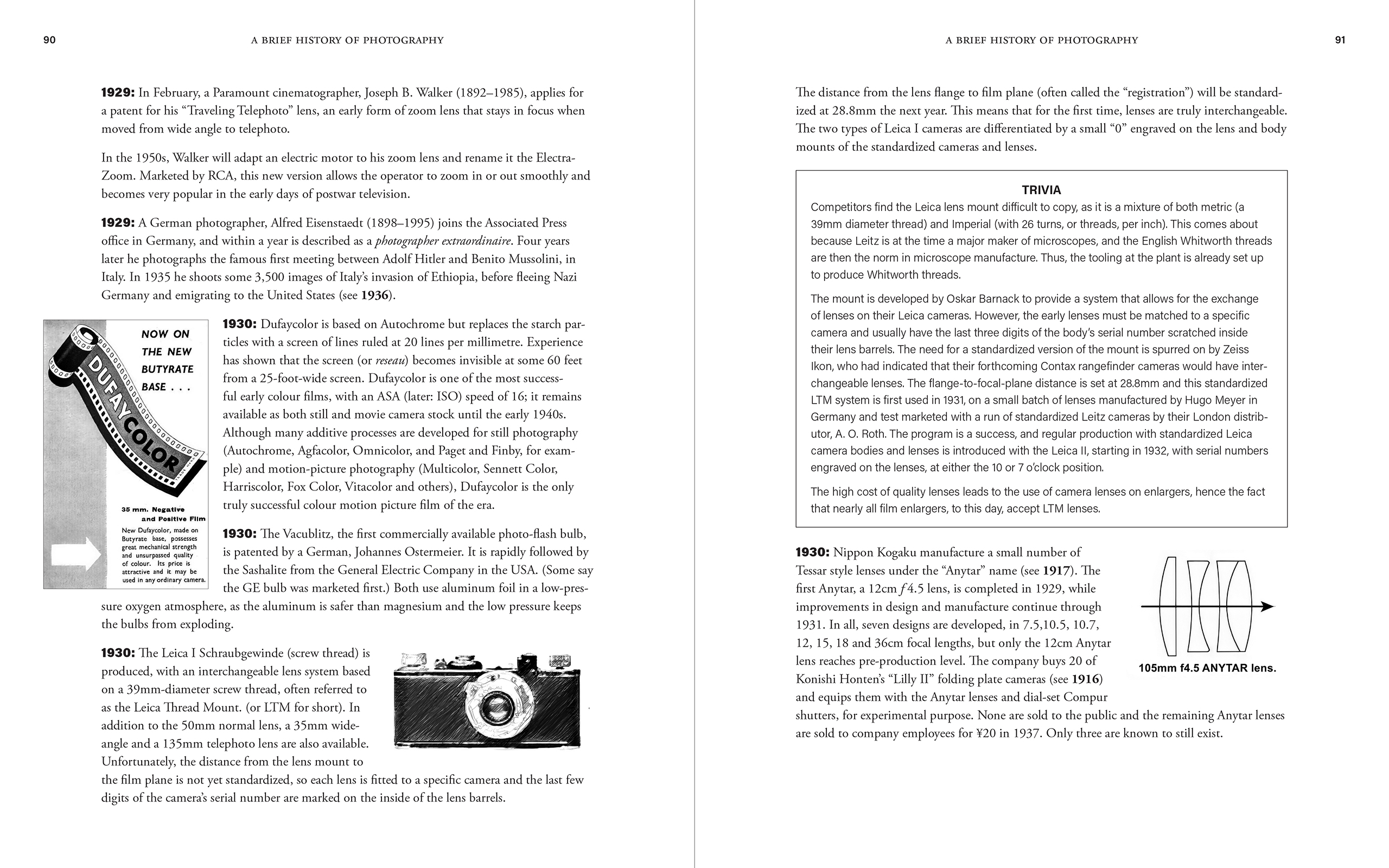
Are you pleased with how it has turned out?
Pleased? No. Absolutely delighted? Yes! Rocky Nook, the publisher, did an amazing job on the design and it's visually very attractive. The content has been receiving terrific reviews… far better than I ever could have imagined or hoped for.
What I like most is that you can read it from the beginning and it's a fascinating history. Or you can pick it up, start reading anywhere for just as long as you like, and it's always interesting.
Did you write the book sequentially, or did you write the chapters in no particular order?
The idea of arranging the book chronologically, rather than in eras (as with most histories), came from a book my father wrote for we three kids, titled 'The First 90 Years'.
But the research was done in a rather haphazard way. When I'd discover some pearl of wisdom that needed to be in the book, I'd simply write the entry and slot it into the correct year. Ever so slowly, the book "wrote itself".
What makes my book unique is that along the way, I'd discover something odd. Something which, in the grand scheme of things, was probably unimportant; yet fascinating.
For instance, many such histories will tell you that in 1851 William Lewis and his son invented the first folding bellows, making cameras smaller and lighter than the then-common, box-in-box construction.
What they don't tell you is that the prototype bellows was made from fabric cut from Mrs Lewis' best black Taffeta dress – much to her distress!
In the end, there are over 400 of these 'Trivia' and 'Oddities' entries, alongside a history that includes not only the seminal cameras and the chemistry to go with them, but also the significant inventors, important lenses and their designers, some major magazines and even a few significant photographers.
This combination makes for an entertaining read that gives a clear understanding of how we got to where we are, today.
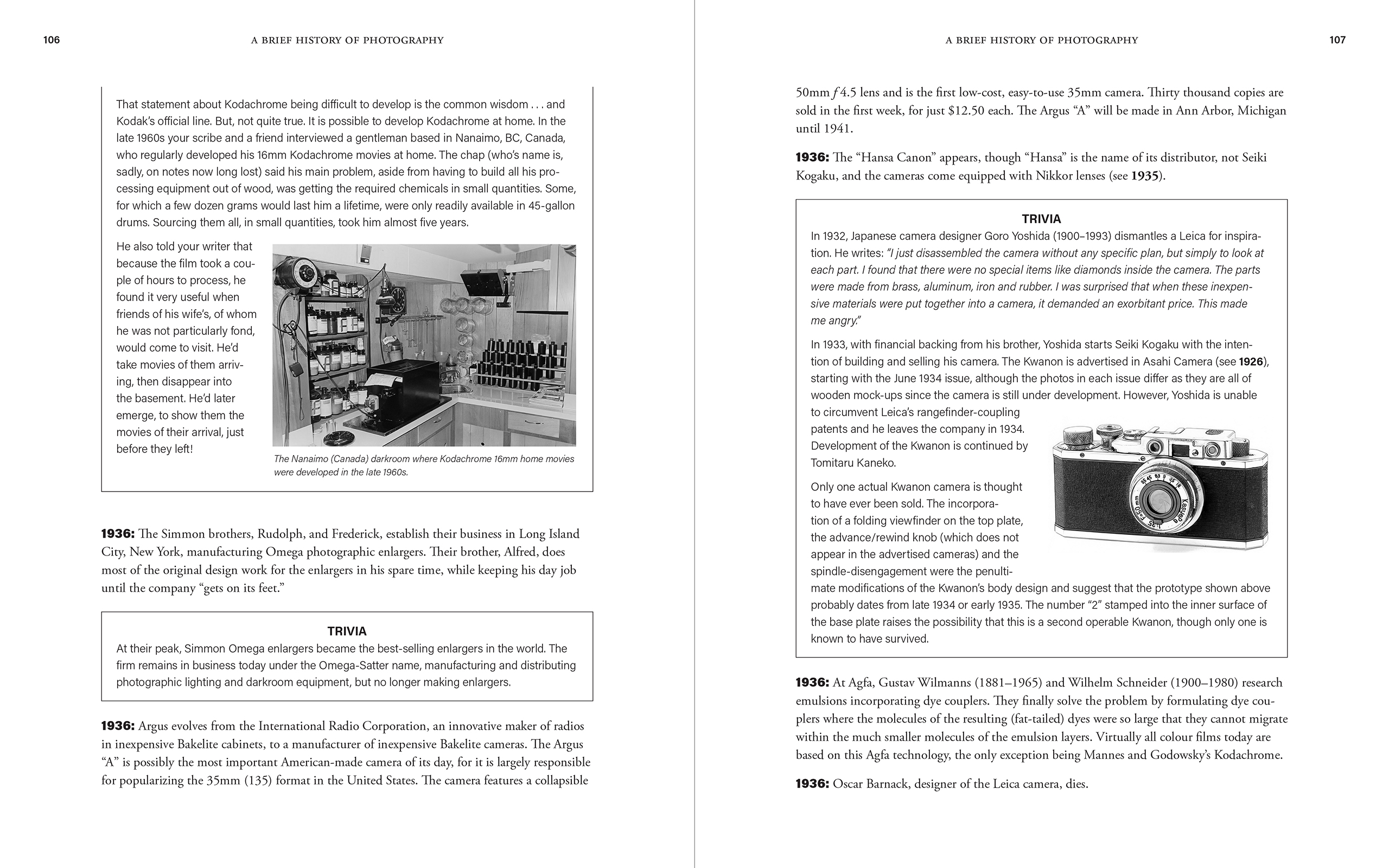
Is there a period of photography history you’re most fond of?
For me, that would have to be 1950 to 1999, for that's when I got my start. First with a Nikkorex 35/2 in 1963 and by 1967 a Nikon F ("the" professional's choice at the time).
SLR development was fast and furious and, of course, the early digital cameras were being invented, developed and by the late 1990s, reaching consumers.
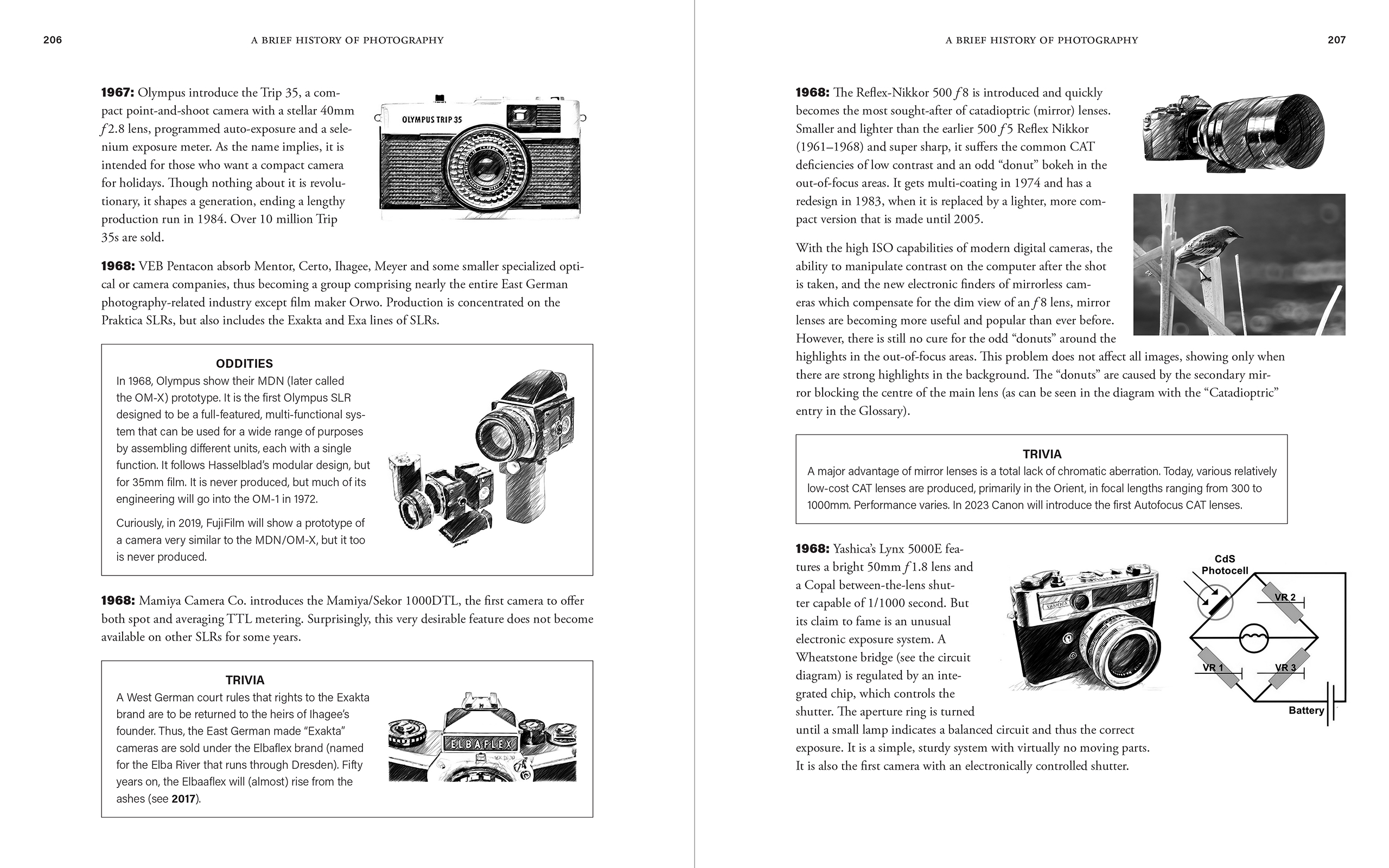
What were your research sources for the book?
Primarily, my sources were a large assortment of photographic history books (some well known, many not), a head full of photographic trivia collected over a lifetime with cameras, and the internet.
Being a retired businessman, I still follow the business news, which sometimes has a tidbit on photography that just doesn't turn up elsewhere.
You mention Edwin Land's contributions to photography in the introduction – for you, which other names are worthy of praise?
I talked about Land because the parallels with Steve Jobs make an interesting story and a great lead-in to a history book.
But there are so many worthy names, from Oscar Barnack to Carl Zeiss, to Steve Sasson… there are simply too many to mention.

The book is an indispensable reference source for anyone who enjoys photography. Who else do you think will buy the book?
Thank you. I think it should be in every photographer's library. But then, I'm biased! I think anyone will enjoy it… and my proof of that is simple.
I know a chap who made the most amazing wooden pens until, sadly, he went blind. He and his wife wanted a copy for their grandson, who is heavily into photography.
Before they gave it away, Derek asked his wife to read it to him, a few pages a day.
Although neither of them has any interest in photography, they've both told me they found it "fascinating" – particularly the 'Trivia and Oddities' sections. No surprise there!
Will you update the book past 2020, or do you consider this project to be complete now?
My original appendix ended with the death of Henri Cartier-Bresson in 2004. So it seemed only fair that the book should end with the 2020 passing of my great friend and consummate photographer, Ted Grant.
After all, it has to end somewhere or I'd still be writing on my deathbed. But during the editing process, we added a few updates right up the spring of 2024, to keep the book as up-to-date as possible.
I am currently working on a revised and expanded second edition, which may or may not ever see the light of day. That will depend on how this edition sells, so please, buy my book!
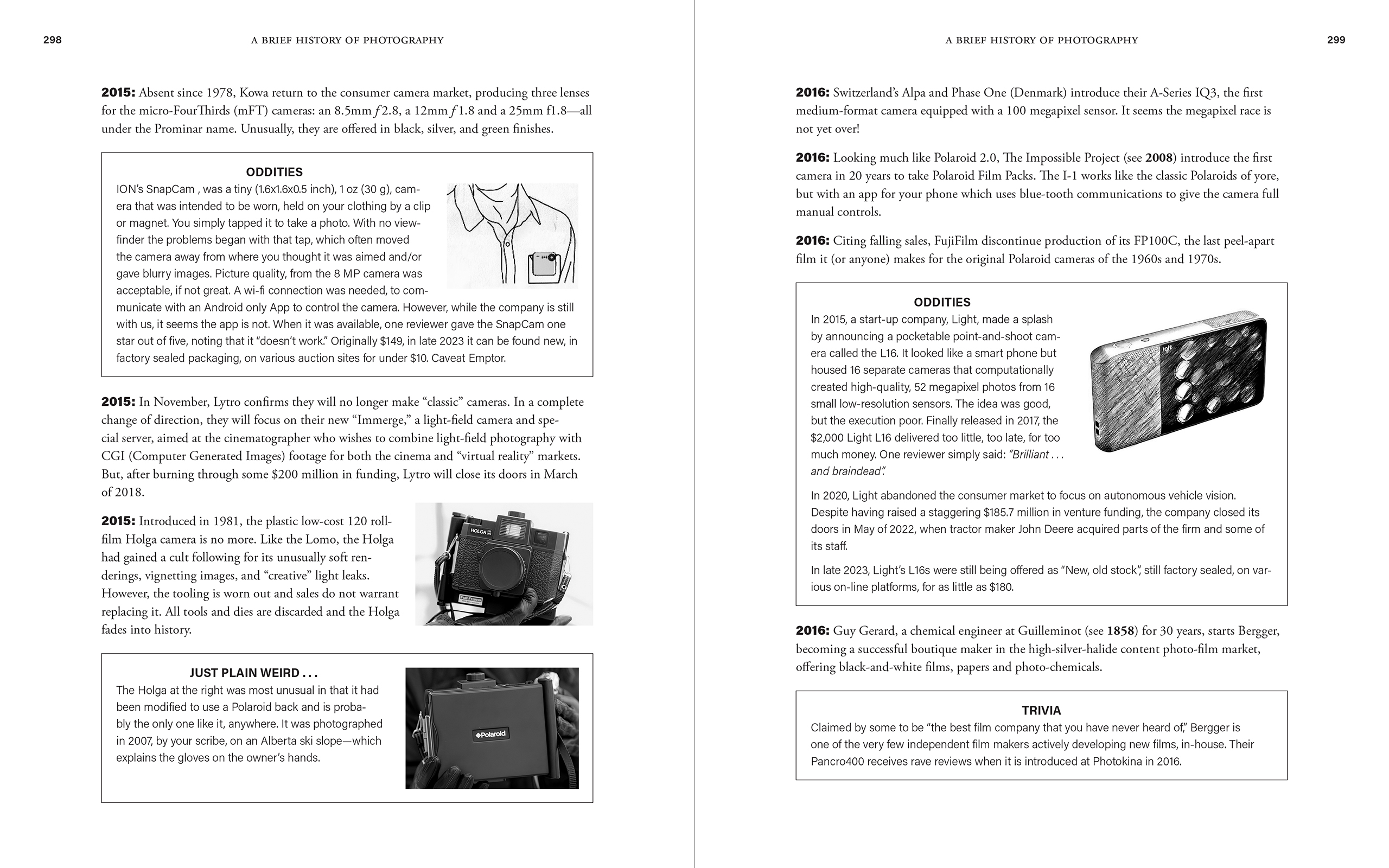
Buy A Brief History of Photography
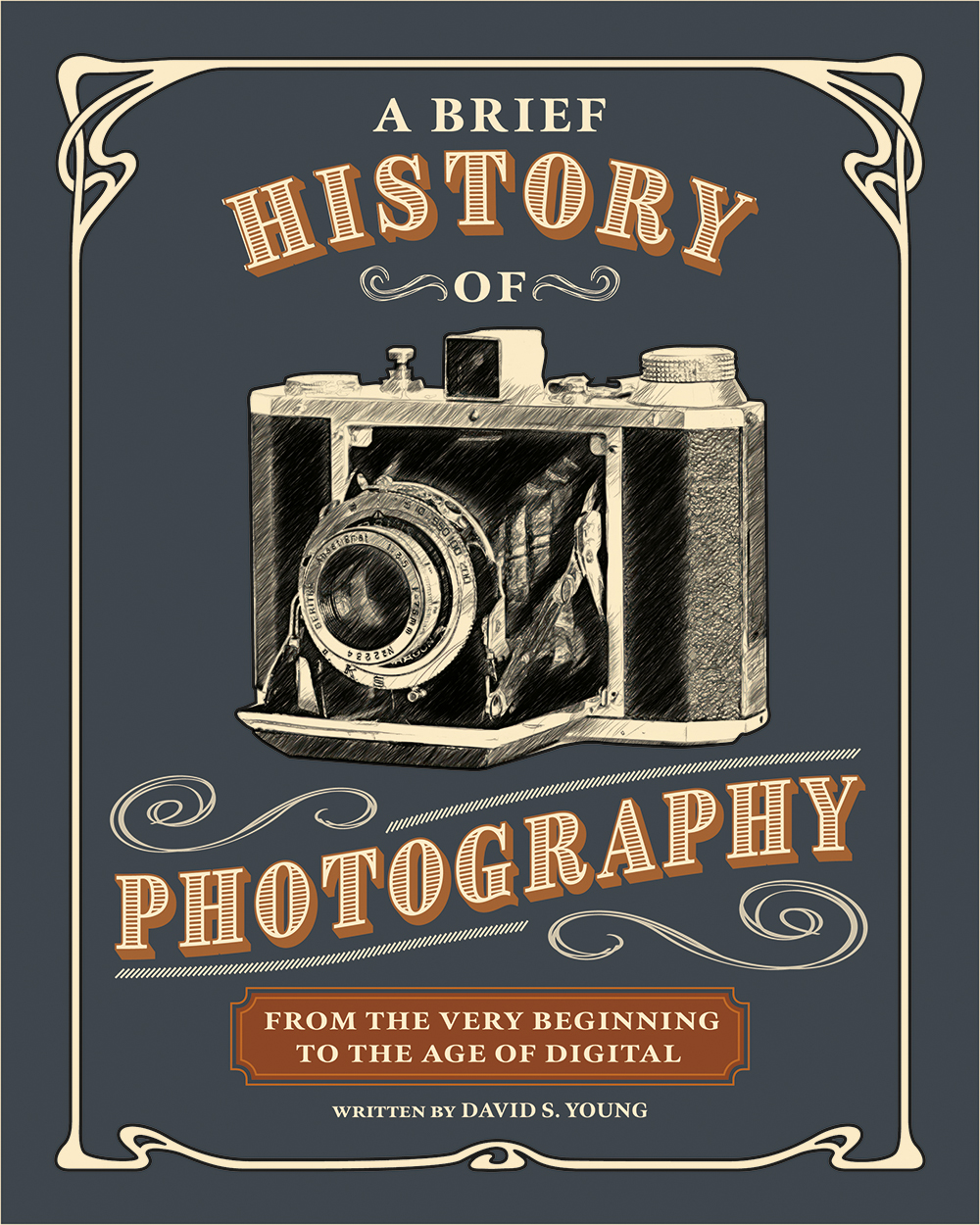
A Brief History of Photography by David S Young is published by Rocky Nook and is on sale now (ISBN 979-8-88814-306-3) priced $39.99/£25.
And here are those trivia question answers…
- The first time the word ‘photography’ was recorded was in February 1839, by British chemist Sir John Herschel, in private correspondence. (Although as Young makes clear, a German astronomer was said to have used it in the same month, but no physical evidence of this survives.)
- The first woman to take a photograph was Constance Talbot, in 1839. She was the wife of William Henry Fox Talbot, a pioneer of photography.
- The single-lens reflex camera was patented in 1861 by Thomas Sutton.
- The first aerial photograph was taken by Nadar in 1858. The French photographer racked up a series of photographic firsts in the 19th century.
- 1932 was the year when Edward Weston and Ansel Adams co-founded Group f64 – named after the aperture setting that produced the sharpest focus on their large-format cameras.
- Agfa's Optima was the first camera with automatic exposure, and was introduced in 1959.
- Ilford launched XP1 chromogenic film in 1980. And Minolta was the brand to first roll out in-body image stabilization, with its DiMage A1 in 2003.
You might also like…
Take a look at more of the best books on photography, along with the best coffee table books on photography.







